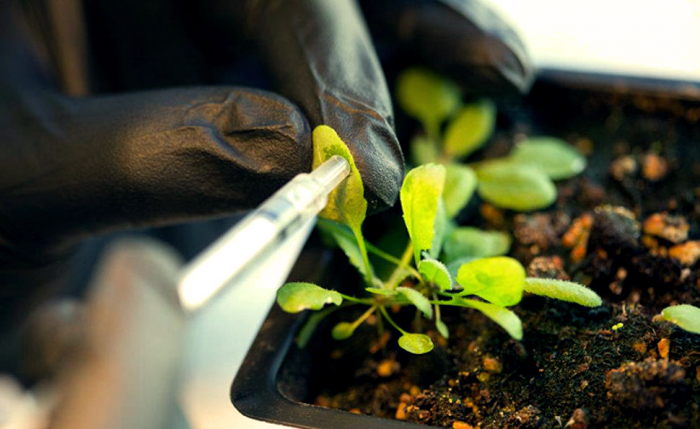
Plant bionics could become a major new field of creative innovation. Scientists have been working to unlock the energy and light-giving potential of plants by integrating nanoparticles into their bodies. It’s a kind of bionic injection in the plant’s photosynthesis organ that enhances sensitivity with varying beneficial results.
The recent advances made by Professor Michael Strano and his team at Massachusetts Institute of Technology have opened up a number of avenues for future plant-based applications.
On the potential of tapping into the natural capabilities of plants, Strano has said, “Plants are very attractive as a technology platform. They repair themselves, they’re environmentally stable outside, they survive in harsh environments, and they provide their own power source and water distribution.”
Last week, we looked at the team’s most recent development on the explosive-sensing capability of the spinach plant. They turned the flowering plant into a kind of natural sensor able to detect harmful pollutants such as nitric oxide. With nanomaterial sensors installed, the spinach plants are able to pick up a specific compound often used in landmines and other similar explosives called nitroaromatic compounds.
This explosive-sensing development was preceded by MIT’s first venture into the bionic potential of plants in 2014. Their earlier experiments successfully enhanced the process of photosynthesis in plants about threefold.
Normally, plants absorb roughly 10 per cent of the sunlight around them. Strano and his team’s carbon nanotube injection acts as a synthetic antenna, allowing the plant’s leaves to absorb wavelengths of sunlight that are not in their natural scope (such as ultraviolet and near-infrared).
The supercharged plants were able to capture light at a much greater capacity (a 49 per cent increase) because of Strano and his team’s intervention. This is a leap forward that has scientists considering ways to harness the excess chlorophyll as a source of clean energy.
Boosting the plant’s natural process in this way “could generate excess power that you could use for other functions in the plant", Strano said. This acceleration could lead to actual ‘bags of chlorophyll’ to be used as fuel, as Strano went on to explain - "Chlorophyll is essentially a bag of proteins that converts carbon dioxide into fuel using sunlight.”
However, taking the excess chlorophyll out of the plant is easy enough, but keeping it active is still problematic. Approximately one hour after the chlorophyll is separated from the plant, it becomes stagnant and no longer produces sugars (fuel).
"We are trying to re-engineer them because what I would really like is to develop a chlorophyll that can sit on the shelf and be active," he added.
In the meantime, MIT’s horticulture research campaign is turning to the subject of bioluminescence. The boosted photosynthesis process, Strano has theorised, could lead to useful light emission from the plant itself.
Envisioning a future in which costly street lamps are made redundant by the organic shine of trees, Strano has speculated, "Suppose we could put nanoparticles [in trees] that catalysed chemiluminescence - you could make trees that essentially glow in the dark."
Summarising the overall potential of these plant-based investigations, MIT plant biologist Juan Pablo Giraldo has said, “Right now, almost no one is working in this emerging field. It’s an opportunity for people from plant biology and the chemical engineering nanotechnology community to work together in an area that has a large potential.”






